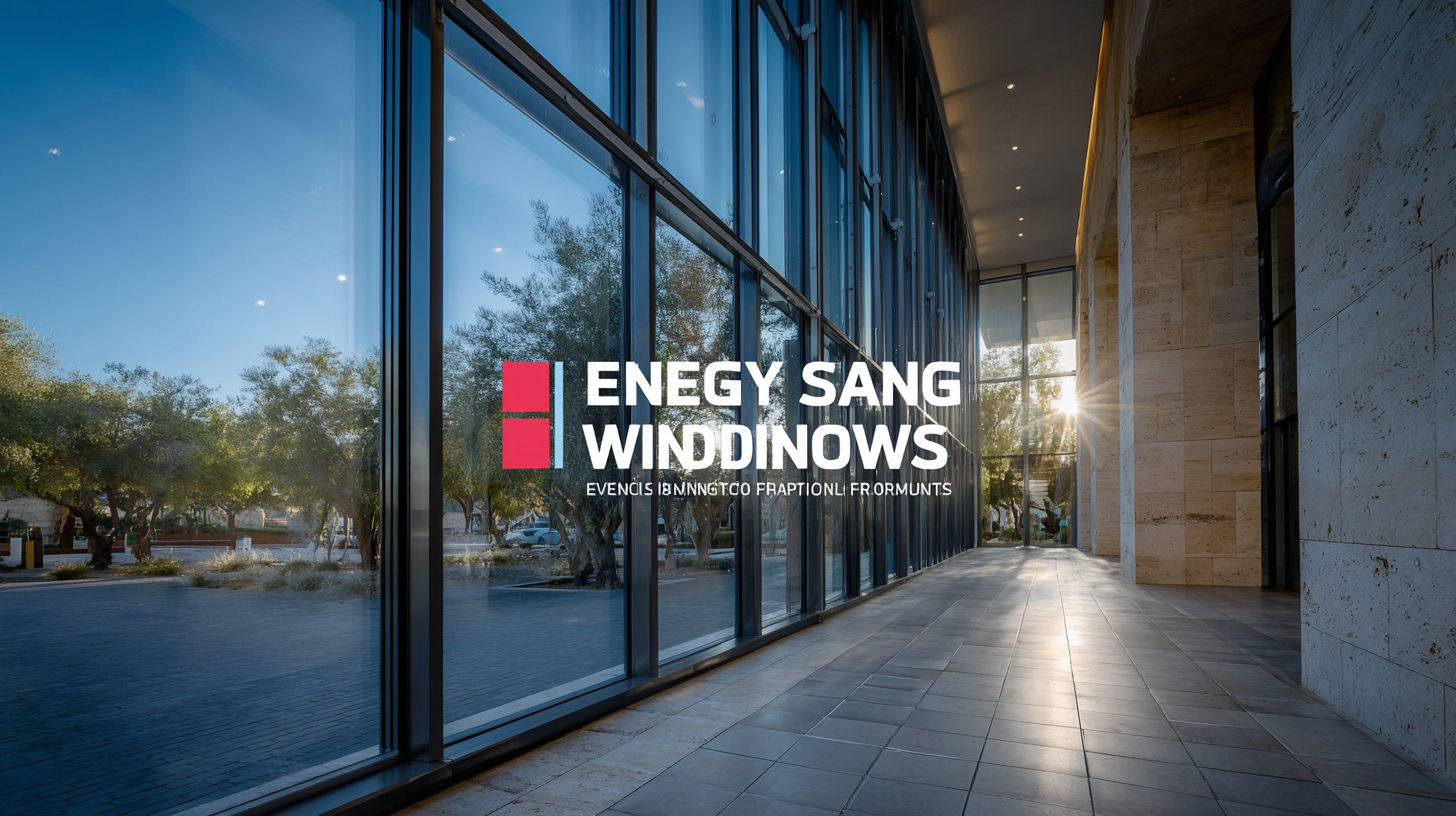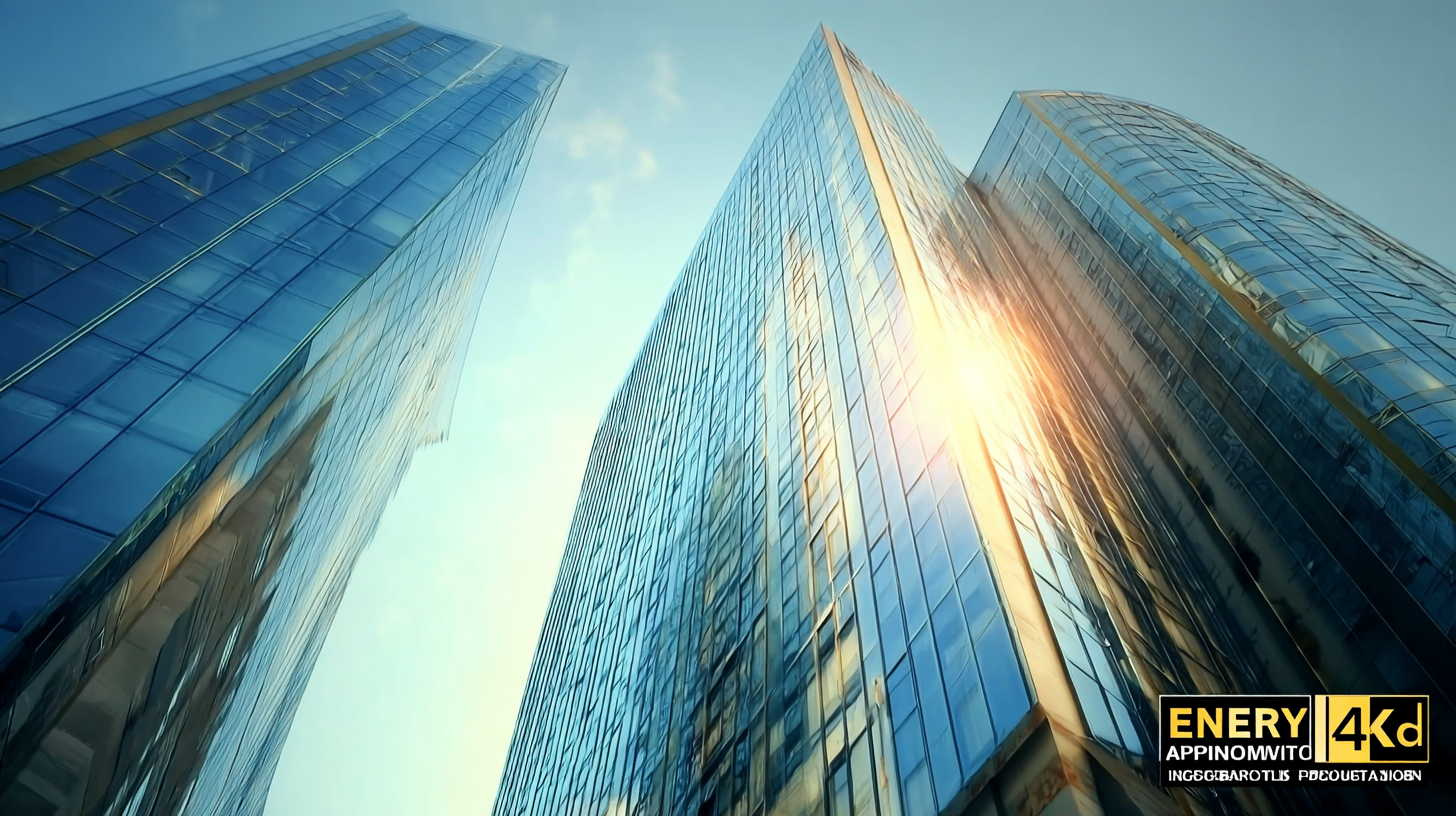In an era where sustainability is at the forefront of modern construction, the integration of Energy Saving Windows has emerged as a pivotal innovation. According to a recent report by the U.S. Department of Energy, windows account for about 25-30% of residential heating and cooling energy use, highlighting the critical role effective window technologies play in energy conservation efforts. The trend towards energy-efficient designs is not just a global imperative but also a regulatory requirement in many regions, with various countries implementing strict energy codes for new builds. By 2025, advancements in materials and construction techniques are expected to further enhance the performance of Energy Saving Windows, enabling substantial reductions in energy consumption and costs. This blog will explore innovative applications of these windows in modern construction projects, showcasing how they contribute to a sustainable future while aligning with industry trends.

In recent years, the construction industry has seen a significant shift towards incorporating advanced energy-saving window technologies. According to the U.S. Department of Energy, windows account for approximately 25-30% of residential heating and cooling energy use. The latest innovations in window design aim to minimize these energy losses while enhancing aesthetic appeal. For instance, the introduction of triple-glazed windows, which feature three layers of glass and enhanced insulation, can reduce energy consumption by up to 50% compared to traditional single-pane designs.
Furthermore, technologies such as low-emissivity (Low-E) coatings and vacuum insulated glass have revolutionized energy efficiency in buildings. A report from the Lawrence Berkeley National Laboratory highlights that Low-E windows can lower energy bills by as much as 30% annually. Meanwhile, vacuum insulated glass not only provides superior thermal performance but also reduces the overall weight of the window unit, allowing for more versatile application in diverse building designs. These innovations not only contribute to sustainable construction practices but also meet the growing consumer demand for eco-friendly homes, making them a vital element in modern construction projects.
Smart windows play a pivotal role in enhancing building energy efficiency, particularly as modern construction projects increasingly prioritize sustainability. A recent report anticipates significant growth in the energy-efficient window market, projecting it will exceed $3.7 billion by 2024, driven by stricter building codes and energy efficiency regulations. Furthermore, the residential energy-efficient window market is expected to reach approximately $11.4 billion in the same timeframe, with compound annual growth rates of 8.5% anticipated from 2025 to 2034. This surge indicates a burgeoning demand for advanced window solutions that can balance aesthetic appeal with energy conservation.
Innovative technologies are at the forefront of this movement, as demonstrated by recent developments in liquid crystal and electrochromic materials, which allow windows to adaptively respond to sunlight, enhancing insulation and reducing heat gain significantly. For instance, academic advancements have led to the creation of smart windows that can almost double solar energy collection efficiency while saving up to 61.5% in annual energy consumption. As climate concerns escalate and the concept of green building continues to evolve, smart windows emerge not just as functional elements but as integral components in the quest for energy-efficient architecture.
In recent years, the integration of energy-saving windows in modern construction projects has gained significant momentum, leading to remarkable case studies that highlight their effectiveness. For instance, a study conducted by the Department of Energy reveals that installing low-emissivity (low-E) windows can reduce energy consumption for heating and cooling by up to 30%. An example of this successful implementation can be seen in the Green House Project in Austin, Texas, where the use of high-performance triple-glazed windows led to a reduction in annual energy costs by over 40%. This case not only demonstrates the potential for energy savings but also enhances indoor comfort and reduces greenhouse gas emissions.
Another compelling case is the sustainable office building, designed by the architectural firm Perkins and Will in Chicago. The project incorporated advanced window technologies, including argon-filled double-pane windows with low solar heat gain coefficients. According to the American Society of Heating, Refrigerating and Air-Conditioning Engineers (ASHRAE), such innovations can improve overall energy efficiency by as much as 20%. By showcasing these real-world applications, it becomes evident that energy-saving windows are not merely an architectural trend but a vital component in achieving sustainability and cost-effectiveness in modern construction.
| Project Name | Location | Window Type | Energy Savings (%) | Implementation Year |
|---|---|---|---|---|
| Green Tower | New York, USA | Triple Glazing | 35% | 2021 |
| Eco Plaza | Los Angeles, USA | Low-E Coated | 40% | 2020 |
| Solar Park | Austin, USA | Vacuum Insulated | 50% | 2022 |
| Smart Building | Toronto, Canada | Argon Filled | 30% | 2019 |
| Green Residence | Vancouver, Canada | Triple Low-E | 45% | 2023 |
As modern construction projects increasingly prioritize sustainability, the future of energy-efficient window innovations is looking bright. Recent industry reports indicate that by 2025, energy-efficient windows could reduce heating and cooling costs by up to 40%, which is especially significant as building energy consumption accounts for nearly 40% of total global energy use. Innovations such as dynamic glass technology, which adapts to sunlight and temperature changes, are leading the way, potentially transforming window performance and comfort in buildings.
Tips for integrating energy-efficient windows:
1. Consider selecting windows with a low U-value and high Solar Heat Gain Coefficient (SHGC) to maximize energy savings.
2. Opt for low-emissivity (Low-E) coatings that can significantly reduce UV penetration while maintaining natural light, further enhancing energy efficiency.
With advancements in smart technology, windows equipped with sensors are on the rise, enabling real-time adjustments for optimal performance. These developments are essential as they not only cater to individual comfort but also contribute significantly to broader sustainability goals in architecture and urban planning. By staying informed about these trends, architects and builders can optimize their designs for energy efficiency now and in the future.

In today's modern construction projects, the integration of aesthetics and functionality in window solutions has become a key focus for architects and builders. According to the U.S. Department of Energy, windows account for 25% to 30% of residential heating and cooling energy use. Consequently, energy-saving windows not only help reduce energy costs but also enhance the overall design and appeal of a building. Modern window technologies, such as low-E glass and triple glazing, have evolved to offer superior insulation, reducing heat transfer while allowing natural light to illuminate spaces.

The aesthetic aspect of window solutions cannot be overlooked. A 2022 report by the American Institute of Architects highlighted that 78% of architects prioritize visual appeal when selecting window systems for their projects. This has led to an increase in demand for customizable window designs that complement the architectural style of a building while still maintaining energy efficiency. By marrying cutting-edge technology with innovative design, modern windows play a pivotal role in achieving sustainable and visually stunning structures, reflecting a growing trend in the construction industry that values both performance and aesthetics.




